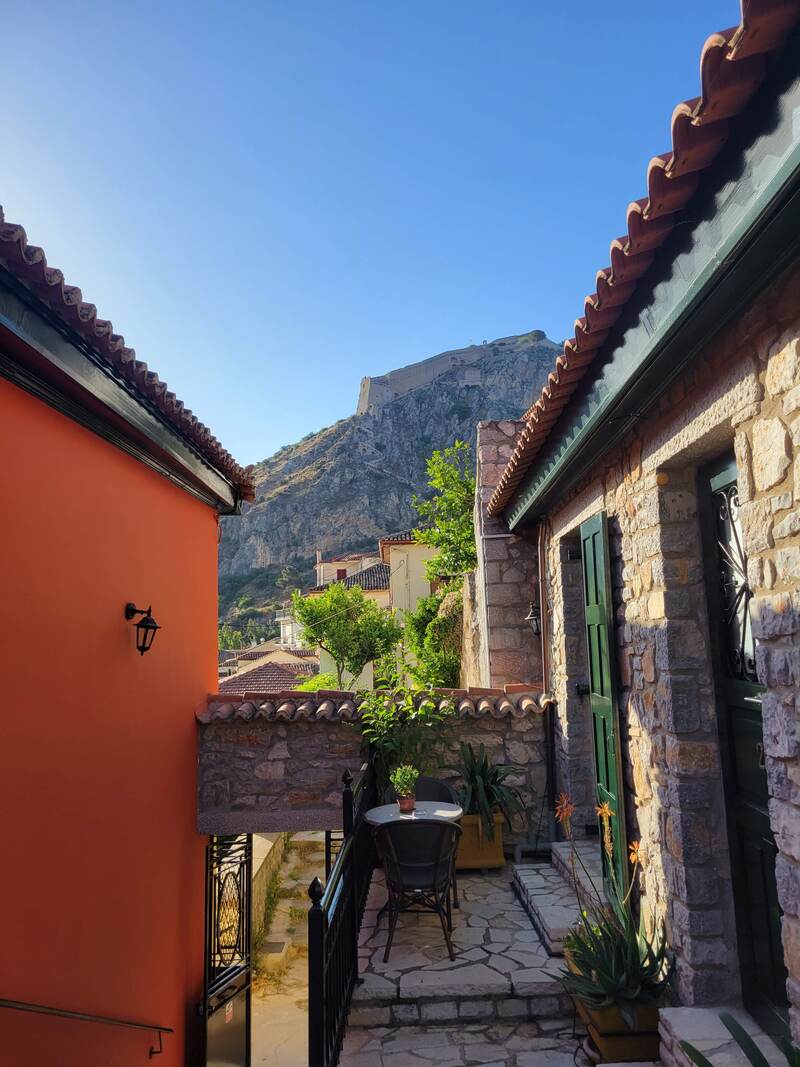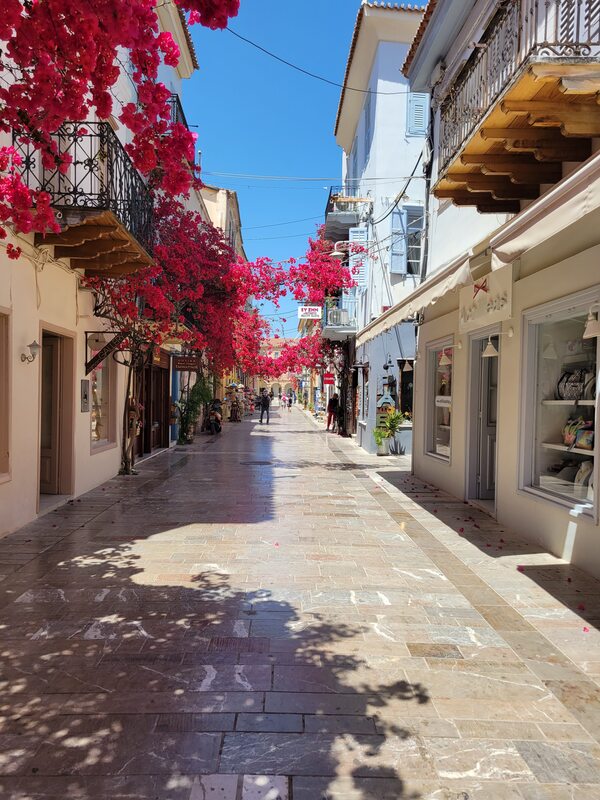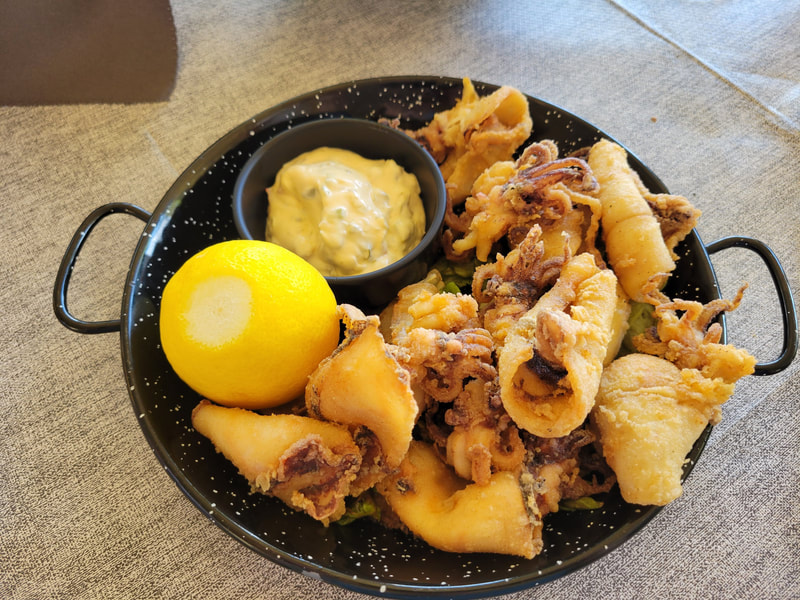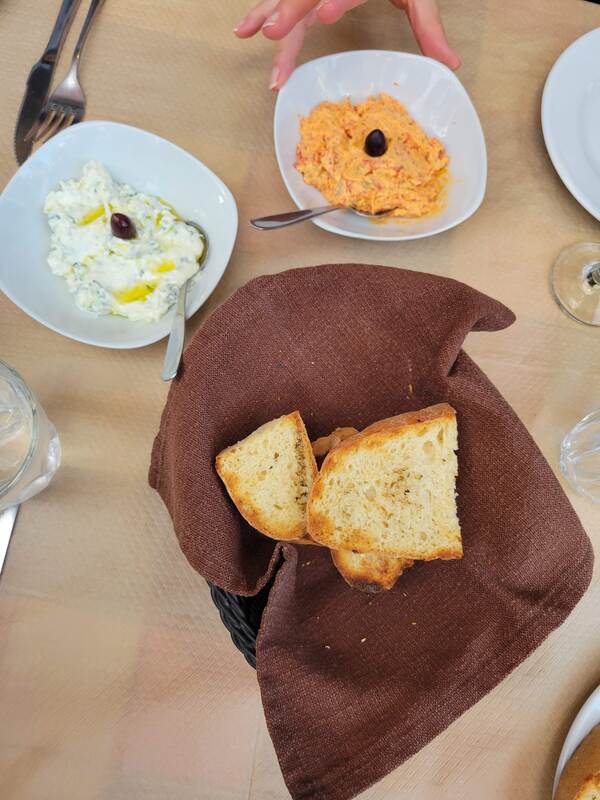Mystical Mycenae.
|
After a delicious breakfast with an even better view, our group met up for a quick jaunt to the bus and a drive to Mycenae. The Mycenaeans, as you can see from the timeline, were a Bronze Age civilization who inhabited sites like this a thousand years before the ancient Greeks. It was amazing how well-preserved some of the sites we saw are, given that in their own time the ancient Greeks viewed the Mycenaeans the same way that we see the ancient Greeks today. Much like we travel to the Parthenon and explore the mysterious artifacts of ancient Greece and wonder about the people who built it and worshiped there, the ancient Greeks toured sites like Mycenae trying to understand its people and customs. The ancient Greeks believed the Mycenaeans were the heroes of the Trojan War, the Iliad and the Odyssey. But they also believed that more mythical creatures built and inhabited some of the sites of Mycenae as well: Cyclopes. After all, who could move and build with such large stones?
|
More modern archaeologists like Heinrich Schliemann in the 1800s held similar beliefs about the origins of Mycenae and its connections to Homer's epics. Schliemann excavated Mycenae and Troy in the late 1800s looking in the Cyclopean walls for evidence of heroes like Agamemnon (and destroyed many important artifacts in the process, unfortunately). A death mask now in the National Archaeological Museum of Athens that Schliemann located he named "Agamemnon's mask," but it is likely the death mask of some other unknown wealthy man of the ancient civilization. The ancient Greeks also believed the Mycenaeans were their celebrated ancestors, but history is rather unclear on what happened to the Mycenaeans - how and why the booming civilization suddenly disappeared after a few hundred years with sites like Mycenae abandoned and burned well before the beginnings of ancient Greece. More careful excavations continue on the site today to try and discover more about the Bronze Age Mycenaeans and this site.
|
My favorite sites at Mycenae were the so-called "beehive tombs" or tholoi (singular: tholos). These were royal burial sites, with chambers carved into a hillside and covered by a mound of dirt. You would struggle to identify a well-preserved tholos from above because it looks like a hill! But inside, the tombs walls and ceiling were supported by heavy stonework. The ancient Greeks believed these were the homes of Cyclopes. As Dafni told us the story of these tombs, she reminded us that sites like these were not "discovered" or "unearthed" by archaeologists. Greeks knew about these sites for centuries and they were often used by shepherds for shelter - for themselves and their sheep. I don't know why, but for some reason I imagined these tiny spaces where maybe 1 shepherd huddled from the rain while his sheep roamed the hillsides. But when we walked up to the Treasury of Atreus (pictured above & below), the site was absolutely massive! This is one of the largest beehive tombs that is still standing, and the size of it really made me understand why the ancient Greeks thought they couldn't have just been built by regular men. I also could appreciate why shepherds might enjoy hiding out in these spaces because, thanks to the stone work and earth above us, the tombs remained at a very comfortable temperature and offered shade from the relentless Greek sun!
|
|
It really is amazing to see what people thousands of years ago (older than the ancient Greeks!) discovered about architecture and were able to build. Each tholos included a dromos, or sloped walkway leading up to the entrance, a massive doorway called a stomion. The stones used in construction are absolutely massive and some have cracked under thousands of years of pressure. To relieve the weight above the doorway caused by these heavy stones (the more sophisticated Roman arch came along much later), the Mycenaeans figured out that cutting a "relieving" triangular space above the lintel would allow the opening to stand without the stones collapsing upon themselves. Amazing! Obviously, not all tholoi survived the test of time, and we explored one which collapsed and has been excavated (now without a domed roof and hilltop covering - much warmer!).
|
After our exploration of the tholoi, our local guide, Patti, led us through an exploration of the preserved artifacts discovered at the site in the Archaeological Museum of Mycenae. The museum provides insight into the art, architecture, and culture of the Mycenaeans, particularly through the study of funerary objects. Following our tour of the museum, we hiked up the hill to the acropolis or ancient walled city of Mycenae. At the top of this complex are the remains of a palace, but the Lion Gate still stands as an impressive entrance to the citadel (sadly, the lions have been without heads - possibly metal - for many, many years). Rick Steves notes in the guidebook that the lintel for the Lion Gate weighs a massive 18 tons - heavier than the anchor of a cruise ship, a T-Rex, or 2 elephants! The city was fairly sophisticated with a cistern to hold water in case of siege and impressive architecture that inspired the ancient Greeks (and, by association, the ancient Romans, and even the modern era - with improvements, obviously!).
We had a lot of free time to explore the city on our own, as well as return to the museum for further exploration before joining Christos back at the bus for our ride back to Nafplio and a free afternoon. A few of us enjoyed a delicious seafood lunch by the harbor at Alaloum Restaurant and some exploration and a dip in the Mediterranean (at Arvanitia Beach) before meeting back at the hotel for our walk to a group dinner in the new town. Dinner was served family style again and I can't even name all the exquisite dishes we enjoyed - along with live music arranged by Dafni for us. She even treated us to some singing and she, Christos, and several other couples joined in some dancing after dessert. The walk back up to our hotel (uphill, what else is new in Greece?) allowed us to enjoy floodlit views of the Palamidi fortress high above the city.




























